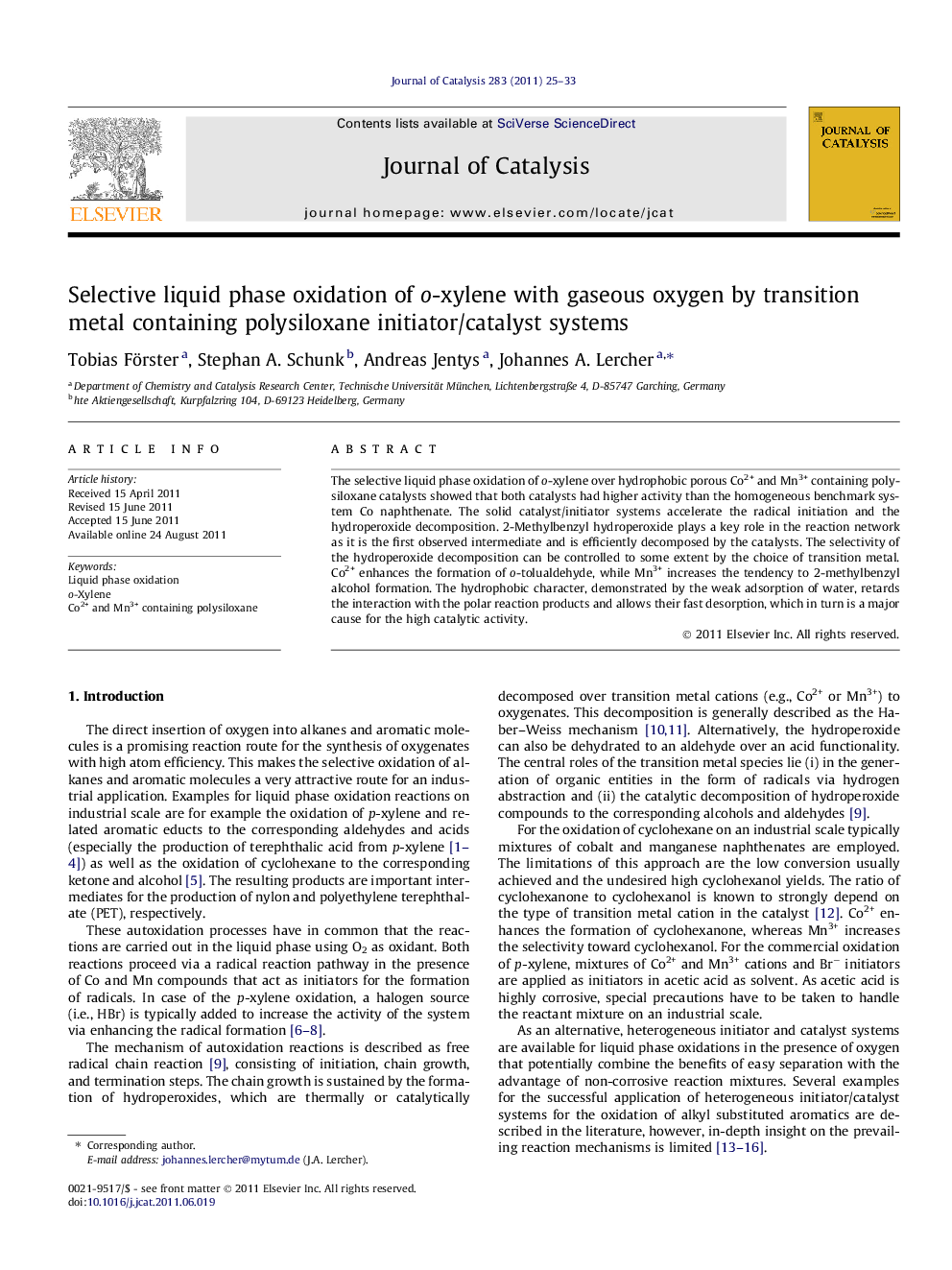| Article ID | Journal | Published Year | Pages | File Type |
|---|---|---|---|---|
| 61589 | Journal of Catalysis | 2011 | 9 Pages |
The selective liquid phase oxidation of o-xylene over hydrophobic porous Co2+ and Mn3+ containing polysiloxane catalysts showed that both catalysts had higher activity than the homogeneous benchmark system Co naphthenate. The solid catalyst/initiator systems accelerate the radical initiation and the hydroperoxide decomposition. 2-Methylbenzyl hydroperoxide plays a key role in the reaction network as it is the first observed intermediate and is efficiently decomposed by the catalysts. The selectivity of the hydroperoxide decomposition can be controlled to some extent by the choice of transition metal. Co2+ enhances the formation of o-tolualdehyde, while Mn3+ increases the tendency to 2-methylbenzyl alcohol formation. The hydrophobic character, demonstrated by the weak adsorption of water, retards the interaction with the polar reaction products and allows their fast desorption, which in turn is a major cause for the high catalytic activity.
Graphical abstractNew solid initiator/catalyst systems (Co2+ and Mn3+ cation modified hydrophobic polysiloxanes) for the selective liquid phase oxidation are introduced, which show a high stability under reaction conditions and a higher activity than the Co naphthenate benchmark system.Figure optionsDownload full-size imageDownload high-quality image (36 K)Download as PowerPoint slideHighlights► A new solid catalyst is described for the liquid phase oxidation of o-xylene. ► Co2+ and Mn3+ cations act as initiators/catalysts for radical formation/decomposition. ► Heterogeneous polysiloxane materials showed a higher activity than Co naphthenate.
